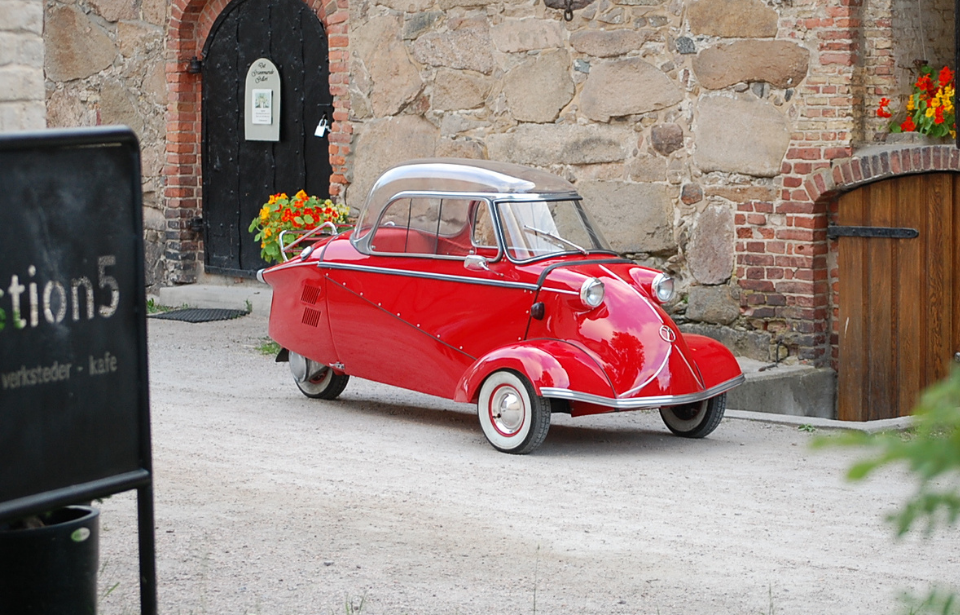Messerschmitt was Germany’s leading aircraft manufacturer during WWII, producing a number of excellent and well-known aircraft like the Bf 110 and the Bf 109, the latter of which is the second-most produced military aircraft in history. Messerschmitt aircraft formed the backbone of the Luftwaffe and were formidable opponents in the air until the later years of WWII. The company eventually produced the Me 262, the world’s first operational jet fighter.
When the war ended in 1945, Messerschmitt was banned from producing aircraft for 10 years. Because of this, the company had to look elsewhere to continue to survive in the post-war years.
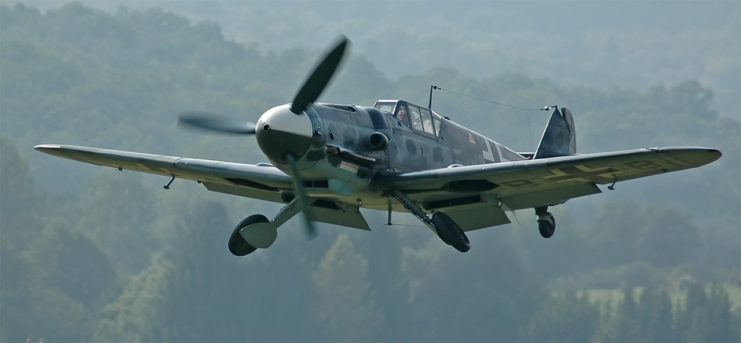
WWII had taken its toll on Germany. The country was split in two and trying to rebuild its shattered economy, industries, and infrastructure. People still needed transport, but the prices of raw materials and fuel meant large, luxurious vehicles were off the menu. Small cars that were cheap to build and run were king in post-war Germany, and much of Europe too.
This was in complete contrast to the United States, which at the same time was experiencing an economic and automotive boom, which would lead into the 1950s “Golden Age” of sports cars, land yachts, and V8 engines.
The microcar
This period spawned a new category of car in Europe, known as the microcar. The microcars had similar proportions to motorcycles but offered more practicality and protection from the elements. They were popular in Europe, and many manufacturers jumped on the trend.
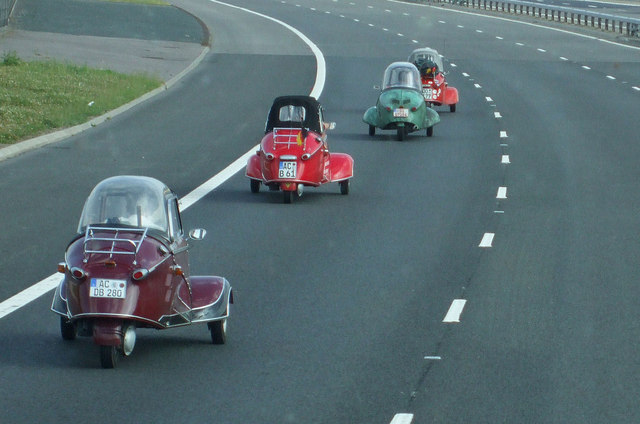
A German engineer named Fritz Fend made his own contributions to the microcar category. Fend was an aeronautical engineer who served as a technical officer in the Luftwaffe during WWII. In the late 1940s, he designed “invalid carriages,” small vehicles for disabled people, but soon realized non-disabled people were buying them too, thanks to the vehicles’ small size and good fuel efficiency.
With this in mind, Fend saw an opportunity to sell vehicles to a wider market. He adapted his previous design into a two-seater vehicle named the Fend 150, which he intended to mass-produce.
To mass-produce his new design, Fend approached Messerschmitt with the offer of the company building it for him. Unable to produce aircraft, Messerschmitt saw this as an opportunity to keep their factories running by supplying Germans with desperately needed cheap transport.
The Messerschmitt KR175
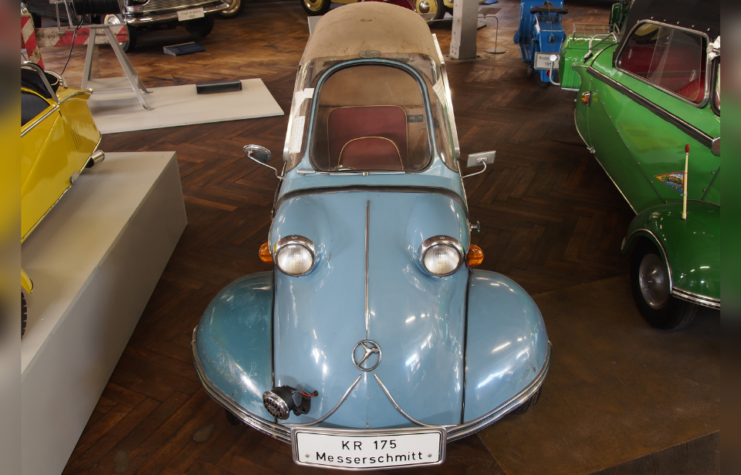
Messerschmitt’s first production microcar was the KR175. The Messerschmitt KR175 was a tandem-seat vehicle just 2.8 meters (9 feet) long, and it weighed 220 kilograms (485 pounds). It was powered by a 170 cc 9 horsepower single-cylinder two-stroke engine that was started by a rope pull or an optional starter motor. It had a top speed of 50 mph and ultra-direct steering, as the steering bar was connected directly to the KR175’s track rod ends.
Access to the vehicle was through a side-opening Plexiglas canopy, which, although visually similar, was not from WWII fighters as is often believed. 15,000 of these three-wheeled vehicles were produced from 1953 to 1955 when it was replaced by its successor, the KR200.
The Messerschmitt KR200
The KR200 was a much more refined and complete design compared to the KR175. A new 190 cc 10 horsepower single-cylinder two-stroke engine gave the microcar a top speed of around 65 mph. New to the KR200, hydraulic shock absorbers were fitted at every wheel to improve the ride quality and handling. The bodywork styling was improved, which, along with the tandem seating, gave the KR200 a very small frontal cross-section which reduced drag.
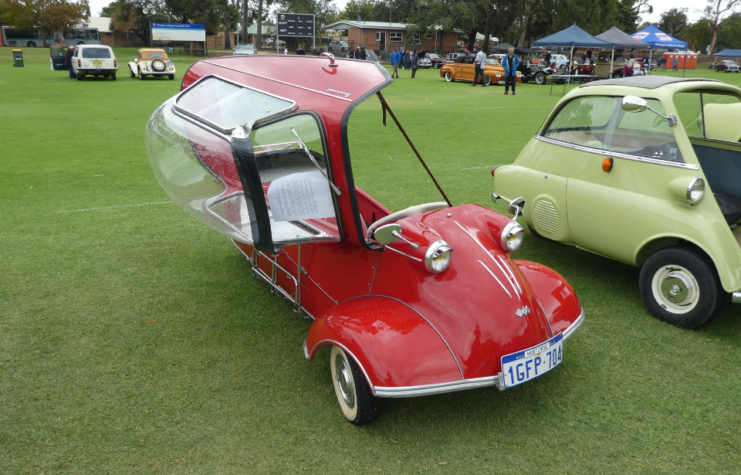
The vehicle had four forward gears in its sequential gearbox, but no reverse gear. Interestingly, to reverse the KR200, the engine would have to be switched off and restarted, but rotating in the opposite direction. The driver achieved this by pushing the key further into the ignition switch. This gave the car the unique distinction of having access to the full four gears while going backwards.
The KR200 offered a package that came complete with a clock, a heater, and a trimmed interior. The KR200 was much more successful than the KR175, with around 30,000 being built.
In 1956, Messerschmitt was allowed to return to aircraft production once again. Because of this, the company had no use for its microcar division, and sold it off to Fend, with permission to continue using the Messerschmitt name. Fend continued building the KR200 and its variants until 1964, when Germany’s economy had stabilized and small cars were no longer in high demand.
More from us: This Silent Plane Flew Over Vietnam’s Treetops Undetected
That brought Messerschmitt’s strange involvement in the automotive industry to an end.
Today, KR200s and KR175s can still be found, and they fetch large amounts of money when sold.
